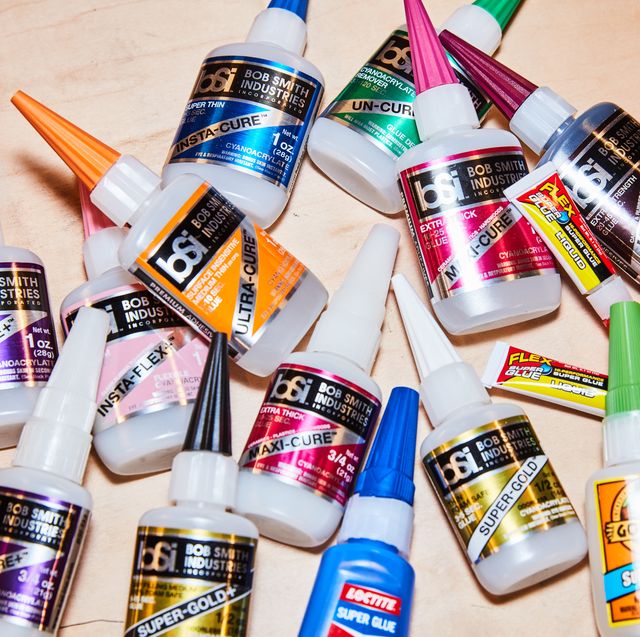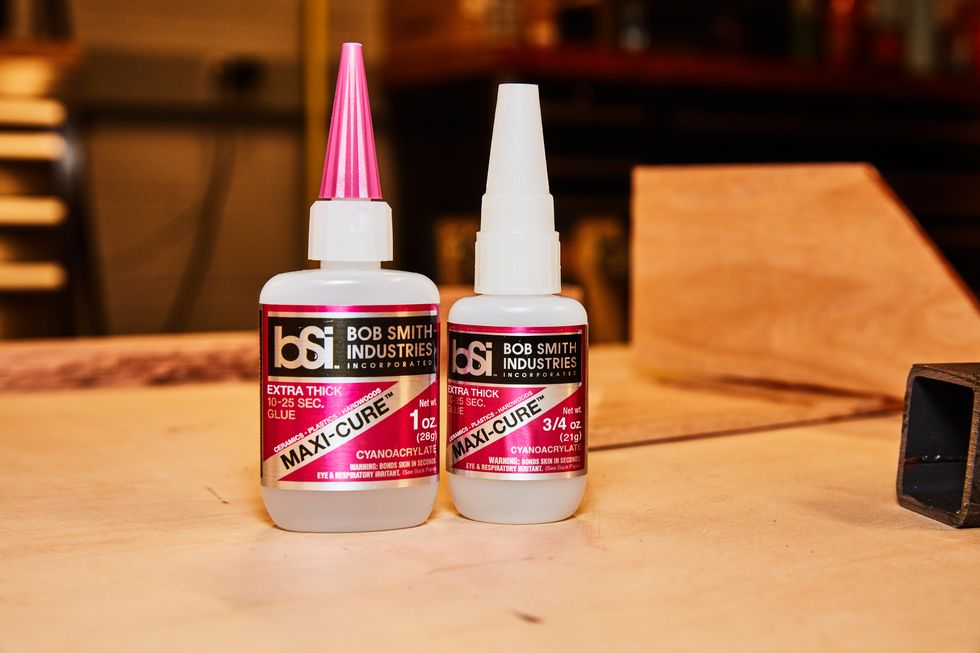On a Wednesday evening, January 7, 1959, Americans would learn of a new substance– cyanoacrylate. Eventually, it would become known as super glue. Chemist Harry Wesley Coover, Jr. appeared as a guest on the popular TV show, “I’ve Got a Secret.” Dressed in a crisp suit and tie, Coover used a single drop of the adhesive to bond two pieces of steel. A minute or so later, he and host Gary Moore were hoisted into the air by the bars. American society hasn’t been the same since.
Fast forward less than a decade later and a medical grade version of the adhesive was saving soldiers in Vietnam by quickly closing battle wounds as it’s used in place of sutures. Between then and now, it’s been used in countless home repairs, industrial applications and innumerable marketing stunts.
I confess that I rarely use super glue. Most of my experience with it was when our offices were located in New York City. I kept a tube of super glue in my desk drawer. Invariably, colleagues would come to me with something that broke to ask if I could fix it: eye glass frames, shoes, buckles and clasps, sometimes shoe heels, the handle on their favorite coffee mug.
The memories of all those repairs came back to me when I ran a series of rough-and-ready tests using J-B Weld. That epoxy-based adhesive, I learned, is as tough as its manufacturer says. I had the same thought about the general class of products known as super glue. Is it any good?
So I picked up some samples of the popular adhesive at a local home center and received a box of samples from Bob Smith Industries (BSI), a super glue manufacturer based out of California. BSI specializes in professional-grade versions of the material for hobbyist, model making, and industrial applications. I tested all these glues out on a variety of materials and came away thinking that super glues are super, but you have to know how to use them.
A Little Sticky History
The first thing to understand about super glue is that it’s not epoxy. Epoxies are two-component adhesives consisting of an epoxy resin and a hardener. These may be in the form of syrup-like gels or two-part putty that you mix together. Many J-B Weld products are epoxies.
Homeowner-grade super glue is single-part liquid or gel adhesive (there are industrial versions of the glue that are two-part formulations). Coover said on his TV appearance that the material was discovered by accident while searching for high-temperature plastics for jet cockpits. A researcher working with him accidentally glued together two glass prisms in an expensive piece of lab equipment. Although the lab equipment was ruined, Coover realized that the material would make an outstanding fast-bonding adhesive. Because the glue was the 910th on a list of materials that they were developing, they named it Eastman 910, after the company Coover and his researcher were working for, the Tennessee Eastman Corporation.
Coover was frank in his TV appearance that the substance was too expensive for homeowner use. Eastman 910, he said, was strictly an industrial substance. It was only decades later, after the patent had expired, that the glue became popular for household repairs. There are dozens of variations of the adhesive manufactured today.
How To Be Super With Super Glue
Every adhesive requires your participation. Not every glue works in every application. Super glue is no exception. There are hundreds of applications for this material, and probably several dozen common applications and techniques that you need to know. We’ll boil it all down to a few basics.
Don’t Glue These Materials
Never use cyanoacrylate to bond cotton, wool, burlap, or blends of those materials with synthetic materials such as polyester. Cyanoacrylate can react exothermically with these materials, and the reaction is so powerful that it can produce smoke (maybe even catch fire).
I’ve read about this reaction and to verify whether it’s true, I tried it out by applying a heavy bead of liquid cyanoacrylate on a patch of porous, wool synthetic blend fabric. Within seconds, there was smoke pouring off the patch and an acrid stink from the melting synthetic fibers.
Based on my little experiment, I think the material is particularly dangerous in proportion to the porosity of the material, which allows air to be pulled through, accelerating the exothermic reaction.
A final caution: super glue is sold in small quantities because a little of it goes a long way. Still, if you need to use a large amount of the material, do so in a well ventilated area.
Unglue
Consult the manufacturer’s data about using an appropriate chemical debonder if you accidentally glue your fingers together or you need to rework what you just bonded. Usually acetone or another potent solvent MEK (methyl ethyl ketone) will work, but consult the manufacturer’s instruction. You can also buy dedicated debonder. I strongly recommend that you keep this stuff on hand whenever working with cyanoacrylate.
Use the Right Glue
Super glue can have a thick or thin consistency, up to the point of being a gel. Use thick glue where you need the adhesive to stay put, such as on a vertical surface. Also use thick glue on surfaces that absorb the adhesive such as leather, cardboard, and the end grain of wood. These surfaces will absorb the glue to such an extent that they will starve the glue joint of enough adhesive to make a bond. It’s also handy on surfaces where, when pressed together, there will be some squeeze out. Thicker glues will not run down the side of the surface.
Super glue can also be slightly thicker than water. This is perfect to bond hard materials that will not readily absorb the glue. It’s also great where you are concerned about a glue line showing through the joint. Some super glues are so thin, you can tape together the part you need to repair and apply the glue to the outside of the joint and let it wick in by capillary action.
Stating the Obvious: Read the Package
Super glue is formulated for both broad and specific applications. Without reading the package, you’ll have no idea. Some formulations work across a broad range of materials and applications. Other super glues are somewhat specific. The package will tell you how quickly the glue sets, whether it’s thick or thin, and whether it offers good shock resistance. It will also tell you what materials it can be used on and what materials it cannot. Some super glue formulations stick reasonably well to a wide variety of plastics. Others do not. Some formulations can bond foam and foam rubber while others will dissolve it.
Mind the Gap
Some cyanoacrylates are specifically formulated to form a bond across gaps—some of them pretty large. We’ve seen product specs of industrial versions that will bridge a gap as large as .200 inch. In the world of adhesives, that’s like bridging the Grand Canyon. In most cases, gap filling is somewhere in the range of .004 to .008 inch.
Surface Prep Matters
Super glue is no different than any other adhesive in that the smoother and flatter the two joining surfaces, the better the bond. When bond strength is critical, grind, sand or clean the surfaces to remove paint, rust, mill scale, dirt, grease, and wood finishes.
Hold Steady
Even slight movement is enough to break the bond that super glue is forming. You need to either hold steady or use a clamp to provide consistent pressure to the joint.
Use an Accelerator
When you need a perfectly glued joint, use an accelerator to freeze the joint in position. Accelerator is a catalyst that can be applied on one side of the joint while super glue is applied to the other. In other cases, it can be applied to the glue that squeezes out of the joint, hardening it nearly instantly. To read more about it, go here.

Roy Berendsohn has worked for more than 25 years at Popular Mechanics, where he has written on carpentry, masonry, painting, plumbing, electrical, woodworking, blacksmithing, welding, lawn care, chainsaw use, and outdoor power equipment. When he’s not working on his own house, he volunteers with Sovereign Grace Church doing home repair for families in rural, suburban and urban locations throughout central and southern New Jersey.
























